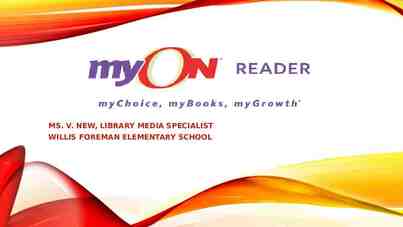CMMI Arnon Rotem-Gal-Oz
20 Slides1.19 MB
CMMI Arnon Rotem-Gal-Oz
The king’s Ship Wasa - 1628 No Specification No Architecture description Changes done on the fly, often under market/customer pressure Testing ignored Didn’t know how to tell the clients No The system last longer than was ever imagined Maintenance costs far exceed ordinary development
PEOPLE TECHNOLOGY PROCESS
Underlying Premise of Process Improvement “The quality of a product is largely determined by the quality of the process that is used to develop and maintain it.” Based on TQM principles as taught by Shewhart, Juran, Deming and Humphrey.
The Software Development Paradox High-Quality High-Quality but but Slow Slow to to Market Market Not Not aa Leader Leader Quality Quality Fast Fast to to Market Market but but Low Low Quality Quality Low Low Customer Customer Satisfaction Satisfaction Speed Speed [1]Booch
What is CMMI? Consultant Money Making Initiative
What is CMMI? Model Practices Process Improvement
Model Say what you do Do what you say Prove It
CMMI Maturity Levels [4]Buchholtz & Cordes
CMMI Process Areas CMMI Options: * with Integrated Product & Process Development (IPPD) Level ** with Supplier Sourcing (SS) Project Management Engineering 5 Optimizing 4 Quantitatively Managed Management RSKM: Risk Management 2 Managed IT*: Integrated Teaming ISM**: Integrated Supplier OID: Organizational and Resolution Innovation &Deployment OPP: Organizational Process Performance RD: Requirements DAR: Decision Analysis OPF: Organizational Development and Resolution Process Focus TS: Technical OEI*: Organizational OPD: Organizational Solution Environment for Integration Process Definition Management PI: Product PP: Project Planning VER: Verification REQM : Requirements MA: Measurement and VAL : Validation PMC: Project Management Integration OT: Organizational Training Analysis Monitoring and Control PPQA: Process & SAM: Supplier Product Quality Assurance Agreement Management Process Management CAR: Causal Analysis : Quantitative Project Management IPM : Integrated Project QPM 3 Defined Support CM: Configuration Management 1 Initial [6]Rudge
CMMI Replaces Software CMM software development System Engineering CMM system engineering Software Acquisition CMM software acquisition System Security Engineering CMM security engineering FAA-iCMM software engineering, systems engineering, and acquisition IPD-CMM integrated product development People CMM workforce SPICE Model software development [4]Buchholtz & Cordes
History of the CMMI 1987 First CMM Published 1991 1993 1995 1997 2002 CMMI-SE/SW Version 1.0 Published SW-CMM v1.1 Published Model Refined and Published as SW-CMM v1.0 2000 CMMI Initiative Launched CMMI-SE/SW/IPPD/A Version 1.1 Published Software Acquisition (SA-CMM), Systems Engineering (SE-CMM), Integrated Product Development (IPD-CMM), Organizational Workforce Capability Development (People CMM) Developed [4]Buchholtz & Cordes
Critique of CMMI “The projects most worth doing are the ones that will move you DOWN one full level on your process scale” (Peopleware) [3] [3]Demarco & Lister
CMMI vs. Agile PEOPLE Process TECHNOLOGY
The Agile Software Manifesto Individuals and interactions over processes and tools Working software over comprehensive documentation Customer collaboration over contract negotiation Responding to change over following a plan [7]Agile
CMMI Practices vis-à-vis Agility “LEVEL 1” Identify scope of work Perform the work “LEVEL 2” Organizational policy for plan, perform Requirements, objectives and plans Adequate resources Train the people Assign responsibility and authority CM for designated work products Identify and involve stakeholders Monitor and control to plan and take action if needed Objectively monitor adherence to process and QA products/services Review with upper management and resolve issues KEY {GREEN : Supportive, White: Neutral, RED: Rough Edges} [5]Jain
CMMI Practices vis-à-vis Agility “LEVEL 3” “LEVEL 4” Maintain as a defined process Measure the process performance to support environment Establish and maintain quantitative objectives for the process Stabilize the performance of one or more sub-processes to determine its ability to achieve “LEVEL 5” Ensure continuous improvement to support business goals Identify and correct root causes of defects KEY {GREEN : Supportive, White: Neutral, RED: Rough Edges} [5]Jain
Agile vs. Plan Driven [2]Bohem, Turner
Why Bother with both? Introduce Agility to a CMMI organization “Best of Breed”
References 1. 2. 3. 4. 5. 6. 7. Software Architecture - A Rational Perspective – G. Booch (ppt) People Factors in Software Management: Lessons From Comparing Agile and Plan-Driven Methods – B. Bohem, R. Turner Crosstalk, Dec 2003 Peopleware 2nd edition, T. Demarco, T. Lister Dorset House 1999, ISBN 0-932633-43-9 Introduction to CMMI, E. Buchholtz, A. Cordes, RTP SPIN Meeting, 2003 (ppt) CSE Annual Review and Excutive Workshop 2002, Apurva Jain (ppt) CMMI : St George or the Dragon?, T. Rudge, Thales (ppt) www.agilemanifesto.org

























